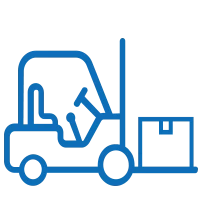Integrated solutions
Lift truck technology
Urbanization and e-commerce are driving warehouse growth to new levels. What are you up against as you scale and push to meet that demand? Annual employee turnover rates hover around nearly 50%, and you’re staring down a global workforce shortage expected to reach 85 million people. Technology isn’t for show. Your success – and survival – depends on it.
Featured Products
Forklifts that answer today’s challenges
This isn’t yesterday’s warehouse, so don’t settle for yesterday’s forklifts. You deserve equipment on your terms, designed specifically to help support today’s toughest labor, safety and productivity concerns.


